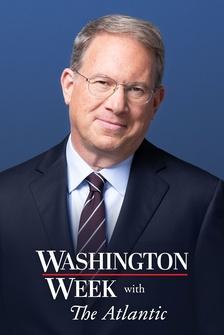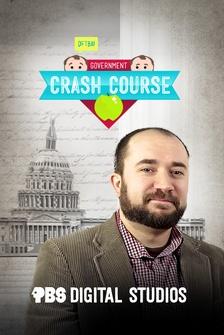LISA DESJARDINS: Tonight on PBS News Weekend, a success story for veterans, and what that says about how to tackle homelessness and the major issues remaining.
Then, how a new requirement could identify more breast cancer cases and save lives, and the story of Palestinian babies born just outside Gaza, who remain separated from their parents.
WOMAN (through translator): I'm not sure that she recognizes me on the phone, she says, but the nurses tell me she does.
I hope she'll remember my face so when we finally meet, she won't feel like I'm a stranger.
(BREAK) LISA DESJARDINS: Good evening.
I'm Lisa Desjardins.
John Yang is away.
Thousands of people lined the streets in Turkey to pay respects to the Turkish American woman who was killed in the West Bank last week.
Aysenur Eygi, a 26-year-old from Seattle, was shot dead by an Israeli soldier during a demonstration against Israeli West Bank settlement.
Her hometown Didim on the Aegean Sea turned out in droves for her funeral.
Both Turkey and the U.S. have condemned her killing.
Israel's military has said she was shot indirectly and unintentionally.
A witness said she posed no threat and was shot when things were calm.
New Israeli air strikes hammered central and southern Gaza today, Gaza's Civil Defense Ministry reported at least 14 people were killed as the war between Israel and Hamas approaches the one year mark.
Moving to another bloody conflict.
Today, Russia and Ukraine exchanged 206 prisoners.
Freed Ukrainian soldiers stood at an undisclosed location wrapped in the national flag.
Separately, Russian servicemen stepped onto a bus headed back to Russia.
It's the second prisoner swap in two days, negotiated by the United Arab Emirates.
Ongoing foreign wars played a part in the U.S. presidential campaign, with former President Donald Trump making this pledge to voters during a campaign stop last night in Las Vegas.
DONALD TRUMP, Former U.S. President: I will end the chaos in the Middle East, and I will settle the war in Ukraine, as I will settle that as President Elect.
Would anybody like to be in war with Russia?
If necessary we would when that, you know, but preferably not.
LISA DESJARDINS: Vice President Kamala Harris, in her first solo TV interview since becoming a Democratic nominee, said she offers a new generation of leadership with a different purpose than her opponent.
KAMALA HARRIS, U.S. VICE PRESIDENT: Most Americans want a leader who brings us together as Americans, and not someone who professes to be a leader who is trying to have us point our fingers at each other.
I think people are exhausted with that approach.
To be honest with you.
LISA DESJARDINS: Harris campaigned in Washington, DC today, and Trump is in Salt Lake City, Utah for a fundraising event this evening.
In Arizona, a Civil War era ban on abortions is now off the books.
The 1864 law criminalized all abortions except when the life of the mother was in jeopardy.
A court had temporarily blocked the law from going into effect, but the State Legislature's total repeal went into effect today.
In November, voters will decide if a right to an abortion should be added to the state constitution.
A damning report is out from investigators in Hawaii who found no evidence officials prepared for the wildfire that swept across Maui in 2023.
The report released last night, said even though officials had days of warnings that conditions were ripe for fires, lack of planning meant evacuation efforts came too late for many in Lahaina, 102 people died in that fire.
Still to come on PBS News Weekend, how a new federal requirement could help identify more breast cancer and Gazan parents separated from their babies by war.
(BREAK) LISA DESJARDINS: Now to a problem across the country and one bright spot of improvement.
On any given night last year in the U.S., some 653,000 people were homeless.
That's according to government data, that was up from 2022 a 12 percent increase.
But one group has seen some improvement over the last 15 years, veterans.
Much of that can be credited to a government housing program from the Department of Housing and Urban Development and Department of Veterans Affairs.
It's called HUD-VASH, after the agency's names.
The program combines housing department vouchers for rent with individual focused case work from the Veterans Department.
Since 2009 that program has led to a 52 percent drop in homelessness among veterans.
Ann Oliva is CEO of the National Alliance to End Homelessness.
Before that, she spent a decade at the Department of Housing and Urban Development and helped design HUD-VASH.
Thank you for joining us.
ANN OLIVA, CEO, National Alliance to End Homelessness: Thank you so much for having me.
LISA DESJARDINS: First, I want to talk overall about homelessness in this country.
Where are we right now?
ANN OLIVA: As you mentioned, about 653,000 people on any given night are experiencing homelessness across the country.
About 35,000 of those folks are veterans, folks who have served in our military.
And what we've seen over the last several years is especially since 2016 it has been an increase in the number of people living unsheltered in this country.
And what I mean by that is folks who are living on the streets or in tents or in cars or RVs.
LISA DESJARDINS: They don't have a permanent place to live.
They're moving around.
ANN OLIVA: That's right.
LISA DESJARDINS: All of that.
ANN OLIVA: That's right.
LISA DESJARDINS: You mentioned the 35,000 veterans unhoused on the street or otherwise without stable housing.
Let's look at what's been happening with that trend here.
This is the one population that there's been some improvement.
And you can see this over time if you look at the numbers, especially in the 2010s What do you think the role is of HUD-VASH in seeing this kind of improvement on that line?
ANN OLIVA: What we know from my own experience and from sort of the national experience on working to end homelessness writ large, is that the easiest way to make it harder is to make it partisan.
And solving veterans homelessness has been a bipartisan issue for a long time, and in part, that's the reason that we have the resources like HUD-VASH in place in order to serve veterans who have experienced homelessness and to get them into safe and stable housing, as well as the services that they need to meet their goals in life.
LISA DESJARDINS: There is an expansion of this program from the original version.
Why did it expand and how significant was that?
ANN OLIVA: So in the very early 2000s there was a small version of the HUD-VASH program that was relatively successful.
But in 2008 we started to receive about 10,000 HUD-VASH vouchers per year -- LISA DESJARDINS: From the government to use for anyone who qualifies.
ANN OLIVA: That's right, it's actually allocated across the country based on relative need in different areas.
And that program has grown from the early years of 10,000 vouchers to about 113,000 vouchers now and since 2012 it served 180,000 veterans who had been experiencing homelessness across our country.
It's extraordinary.
LISA DESJARDINS: Was that expansion brought about because of an increase in demand, or was it an increase in awareness that this was a program that could help or both.
ANN OLIVA: I think it's both, but it's also an increase in attention from our leaders.
What we've seen from our leaders is three things, leadership on the issue of veteran homelessness and the 2010s as you mentioned, there was a lot of local leadership.
Mayors were working to end veteran homelessness, governors and the White House was working in concert with folks to end veteran homelessness, both locally and nationally.
We see good policy housing and the services that veterans want and need.
It's called housing first, that policy really is the driver behind the decreases that we've seen among veterans experiencing homelessness and resources is the third one.
I just mentioned, that HUD-VASH has been allocated resources every year since 2008 and it has grown over time because folks up on Capitol Hill within the administration.
And in communities all over the country are really committed to ending veteran homelessness.
LISA DESJARDINS: I want to take a look back again at that graph we showed, indicating where veteran homelessness is that is such a steep decline, but on the other side of the coin, you see it's flat lining there.
There hasn't been continued decline.
Essentially why do you think it's hard to get past that 35,000 point?
Do we know?
ANN OLIVA: I think we do know.
We know that the market for safe and affordable rental homes has been getting tighter and tighter since 2016.
We've seen an increase in unsheltered homelessness among all populations, starting in 2016 every year, year over year.
And for veterans, even though they have access to these resources like HUD-VASH, sometimes it's hard to use that voucher, that housing choice voucher that provides them that rental assistance, sometimes it's hard for them to find a unit, and sometimes they need more help to find those kinds of units as the market gets tighter for veterans and for everybody, so those increasing rents across the country are impacting everybody.
They're also in impacting veterans.
LISA DESJARDINS: In our last 30 seconds or minute here, this is a problem that's been in this country quite a long time.
ANN OLIVA: Yes.
LISA DESJARDINS: You're part of exploring a lot of solutions.
It's a multilayer problem.
Do you think is there some hope that there can be some new solutions coming?
ANN OLIVA: I have to have hope every single day when I come to work, because I actually know that we can end homelessness among everybody, and especially for veterans, because we have resources that are tailored to the needs of veterans who are experiencing homelessness.
And what I say to folks when they ask me this question is that we actually know how to end homelessness.
It's safe and affordable housing, coupled with the services like mental health services, sometimes substance use treatment services, physical health services, and all of those things are available to veterans who qualify through the VA.
So if we could provide access to those kinds of services and housing to everybody who is experiencing homelessness, I think we would see sharp declines in other populations as well.
LISA DESJARDINS: It may not be easy, but it is doable, is what you're saying.
ANN OLIVA: It is doable.
It takes intention, it takes time, and we have to do it over, over years, but it is doable.
We've seen it.
LISA DESJARDINS: Ann Oliva, thank you so much for joining us.
ANN OLIVA: Thank you so much for having me.
LISA DESJARDINS: A sobering number, about one in eight women will be diagnosed with breast cancer in her lifetime.
That's one reason doctors recommend women get a yearly mammogram beginning at age 45.
But for some women, mammograms won't detect their cancer, which is why, as Ali Rogin reports, a new FDA requirement could identify more breast cancer cases and save lives.
ALI ROGIN: Earlier this week, the FDA began requiring that all mammogram reports disclose information on a patient's breast density.
Higher breast density not only puts patients at higher risk of developing breast cancer, it can also make cancers more difficult to detect, meaning patients may require additional screening.
JoAnn Pushkin is the executive director of DenseBreast-info.org.
She's also an advocate and breast cancer survivor herself.
JoAnn, thank you so much for being here.
Why is breast density such a crucial thing to know about for anybody who has breasts?
JOANN PUSHKIN, Executive Director, DenseBreast-info.org: Well, they're common and normal, and most women have some level of breast density in their breasts.
But as density increases, so does the likelihood that a cancer will be missed if it's present.
And breast density, in and of itself is an independent risk factor for the development of breast cancer.
So for women with dense breasts, it can both hide cancer and increase their risk.
And so they certainly need to know this information.
ALI ROGIN: Now that these new FDA requirements have gone into effect, what does that mean for a woman?
Will it be that it's going to be in more plain English than it has or just that there's a standardized language that's going to be used?
JOANN PUSHKIN: Yes, both some state laws did not even tell the woman she had dense breasts.
Some did not tell her she was at increased risk.
So the new notification includes four components.
The first is that it definitively tells the woman if she has dense breasts.
The second is that it tells her it can hide cancer, that it does increase her risk, and that there are other tests that might detect cancers, that mammograms may miss, and she should certainly speak to her doctor about this additional screening.
What everyone should do from this point forward when they get their mammogram results, letter is read that paragraph carefully, because it will be new information for everyone in the way that it is worded and the content that it contains.
ALI ROGIN: And so if a woman does find out that she has dense breasts, what then, what should she do?
And what should she expect that her.
Physician would do?
JOANN PUSHKIN: So there is no one size fits all screening protocol.
Women really need to sit with their providers discuss breast density there.
Certainly there are other risk factors for developing breast cancer and have a discussion about what might be appropriate for her other imaging exams, such as ultrasound or MRI, are the two that are most typically recommended as additional screening tools after the mammogram.
ALI ROGIN: Now, of course, what led you to co-found DenseBreast-info.org, and go down this road of advocacy was your own experience with breast cancer and with breast density.
Tell me about your journey and how that led you down this path.
JOANN PUSHKIN: I was 45 years old, and at that point, had been getting mammograms since 40 every five years prior to that.
And of course, I never missed one, and I was a faithful patient, and exercised, ate healthy, had only one relative that had ever had breast cancer.
And then one day, though, during a self-exam, I feel alone.
I wasn't too concerned, because I had just had a very recent normal mammogram.
But of course, they tell you, if you feel something, to call your doctor.
And I certainly did.
And then I went and he felt the lump and sent me on, then for a diagnostic mammogram and for an ultrasound the very same day.
And now I'm waiting in that little room for them to come back, hopefully to give me the all clear.
And the tech comes in and says, oh, we, you know, we didn't detect anything.
And I was a little confused, because I knew I felt something, but it was a large facility with multiple waiting rooms, and I just assumed she'd come back into the wrong room.
And I said, Oh no, no, no, no, I'm the lady with the lumps away so big I can feel it.
And she said, Oh, that's going to be a hard fine for us.
You have extremely dense breasts.
And I remember sitting back and saying, what?
And I'm sent for the ultrasound, you know, 15 minutes later, and there it is, quite obviously.
So what was not visible at all on the mammogram was clearly detectable on the ultrasound.
ALI ROGIN: And you had been going routinely for mammograms up until that point, and your cancer was not detected.
Does that mean that if you had been aware of your breast density, your cancer may have been detected earlier?
JOANN PUSHKIN: Certainly because by size and stage, the cancer was estimated to have been growing for three to five years in my breast undetected, every single one of them by mammography, women are often shocked to learn that in a dense breast, a mammogram report reported to her as normal, negative or benign, does not reliably mean that cancer is not there.
ALI ROGIN: These updated guidelines are definitely going to help a lot of women find out more about their bodies.
But another hurdle remains, insurance coverage of additional screenings.
What is the state of that fight?
JOANN PUSHKIN: So generally, if a woman's doctor or her health provider says there is a medical need for her to have additional imaging, generally, her insurance will cover it, though copays and deductibles may apply.
Additionally, several states, 33 states right now, have passed laws for expanded coverage for breast imaging after a mammogram, again, not without copay and deductible necessarily, but they vary from state to state, and women really need a consistent standard for insurance coverage, just like with the FDA this week now has standardized the notification she's going to get.
Now, we need a standardized insurance coverage for women.
ALI ROGIN: JoAnn Pushkin, Executive Director of DenseBreast-info.org, and an advocate and breast cancer survivor.
Thank you so much for joining us.
JOANN PUSHKIN: Thank you.
LISA DESJARDINS: A group of parents in Gaza have described heartbreak as they remain separated from their babies who were born prematurely in Jerusalem just over a year ago.
They needed specialized care in Israel, and their parents were supposed to reunite with them, but the war has kept them separated, meaning shaky video calls and the closest contact they have with the children are from those calls.
Rachel Younger of Independent Television News has this report from Jerusalem.
RACHEL YOUNGER (voice-over): (INAUDIBLE) triplets, Najwa, Nur and Neshmay, a handful of mischief at almost 13 months old, and little Sethida (ph), who was born just a few weeks before them, it should be their parents here playing with them, but almost unbelievably, having been born just outside Gaza, they're now stuck on different sides of the impenetrable wall that surrounds it.
The only time they get to see their faces are during the fleeting minutes when they can get a connection to one of the most dangerous places on Earth.
Bubba or daddy, they shout as little Neishmate (ph) reaches out for the father she's never met.
The hospital can't get hold of Sahidas' (ph) parents today.
Back in Gaza, Hiba (ph) and Salah (ph) have been displaced to a tent and with no phone service, often, old photos are the only connection they have to their daughter.
I'm not sure that she recognizes me on the phone, she says, but the nurses tell me she does.
I hope she'll remember my face so when we finally meet, she won't feel like I'm a stranger.
Like the triplets parents, she'd already waited so long for a daughter, they're all IVF babies born here prematurely at the end of last summer, because even then, the level of neonatal care here wasn't available in Gaza.
DR. AMIR ATAWNEH, Makassed Hospital: They come.
They get their babies delivered here.
Then they can stay for few days or a week or so, and then they have to go home because the permits usually are have limited periods.
RACHEL YOUNGER (voice-over): They were due to come back for their babies on the eighth of October, but the war means that every day they are missing irreversible milestones, nor starting to crawl.
Neshma (ph) learning the drums, Saida (ph) attempting to blow her first kisses.
AMIR ATAWNEH: You know each one of us, it would be very interesting moment in his life when he sees his child just taking his first steps and walking around and talking and saying a Bama, such like that.
And the family, they missed those moments.
RACHEL YOUNGER (voice-over): All staff here can do is keep building the bond between baby and parent.
RACHEL YOUNGER: What happens when she sees -- WOMAN: When see the telephone?
Always say mama.
RACHEL YOUNGER (voice-over): Across the corridor, other luckier parents watch every moment of their newborns progress because Sahida (ph) and the triplets were equally tiny their mums in the little time they had never even got the chance to hold them.
LISA DESJARDINS: That was Rachel younger of Independent Television News.
Finally, tonight, a popular online geography game that takes players around the globe, one Google Street View image at a time.
Our own puzzle master John Yang has our look inside the world of GeoGuessr.
MAN: Would you believe that those contexts at home?
This is where we are right now.
You guessers just found us.
JOHN YANG 9(voice-0ver): At the second GeoGuessr World Cup in Stockholm.
players were virtually dropped at random spots around the world and challenged to see how quickly they could identify the location.
Their clues were obscure details, like signs, buildings, even the plants and trees.
The game has been described as incredibly addictive, and the GeoGuessr site has tens of millions of player accounts.
JOHN YANG: You said that you in the general you anyone could do this as fast as you can I will disprove that right now.
TREVOR RAINBOLT: I didn't say how long anyone could do it.
JOHN YANG (voice-over): I sat down for a round with perhaps the game's most famous player, Trevor Rainbolt.
JOHN YANG: I'm going to put my reading glasses on for this.
I'm looking for road signs.
This looks European because of the crosswalk, the pedestrian sign.
TREVOR RAINBOLT: We also birch trees.
Usually birch trees are kind of more colder climate in the north, so.
JOHN YANG: Shame on me for not knowing my flora.
JOHN YANG (voice-over): How does Rainbolt play the game?
TREVOR RAIBOLT: All right, so round one here, it looks like it's going to be Kurdistan.
JOHN YANG: What told you was Kurdistan?
TREVOR RAINBOLT: It looked like it that's Romanian.
Looks like it's Eastern Romanian.
JOHN YANG: It looked generic to me.
And you said, oh, that looks like Romania.
TREVOR RAINBOLT: We call it a vibe guess where it just is like somewhere in my brain, I feel like I've seen something that looks like this before in this area.
So it's all up there somewhere.
You just have to kind of find it.
JOHN YANG (voice-over): Rainbolt discovered GeoGuessr during the pandemic, watching YouTube videos and then studying Google Street View.
TREVOR RAINBOLT: Especially during COVID, where you couldn't really go anywhere.
The game was my plane ticket, really, and they kind of gave me this like newfound curiosity and appreciation for all these different countries in the world that, candidly, I didn't really know much too much about at all.
JOHN YANG (voice-over): Social media videos of rainbow playing the game at his desk have millions of views and legions of fans, whether it's simply looking at the soil or pixelated details.
TREVOR RAINBOLT: Just Brazil pretty free.
JOHN YANG (voice-over): Sometimes only seeing an image for a 10th of a second.
TREVOR RAINBOLT: Iceland, no.
I really, genuinely don't think I'm some sort of superhuman in the sense of this.
It's a lot of just practice and a lot of.
In recognition, I know where to look for that one distinct thing, whether it's a telephone pole, it's a bothered on the side of street, it's distinct road lines in a single country, the vegetation a certain mountain.
You know, it's all these things combined that go into this game that you kind of have to look for.
There's language here.
This would be Hong Kong, Netherlands with the bike paths.
Classic Netherlands move with bike paths.
JOHN YANG (voice-over): A community of players is built up around the game.
TREVOR RAINBOLT: We're all also just curious.
You know, I think that's what you have to be if you want to succeed in this game.
You get people from all walks of life, India, China, Europe, you know, all like South America.
It's a really global game with global community.
And it's -- that's awesome.
LISA DESJARDINS: And that's our program for tonight.
I'm Lisa Desjardins, for all of my colleagues, thank you for joining us.
See you tomorrow.









